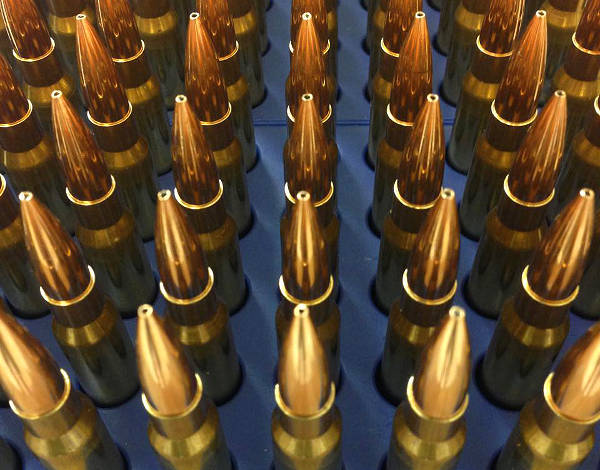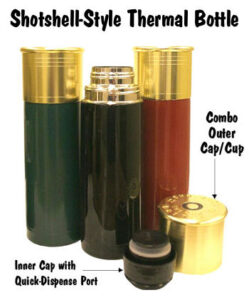The U.S. Army Marksmanship Unit has published a series “how-to’ articles on the USAMU page. The USAMU’s reloading experts examined the issue of cartridge run-out, and what could be done to produce straighter ammunition. The USAMU reloading team has developed clever methods to improve concentricity even with low-cost dies. Visit the USAMU’s Facebook page for more hand-loading advice. This USAMU article describes how to set standard bullet seating dies up to minimize Total Indicate Run-Out (TIR). The loading process will be described using a one-stage press, since this is the most common type of handloader. For consistent and accurate results, a high-quality runout gauge is required. After we have sized, primed and charged our brass the next step is to seat the bullets. There are many possible approaches; here is one that works. Insert a sized and trimmed case in the shellholder, then fully raise the press ram. Then, screw the die until the internal crimping shoulders touches the case mouth. To prevent cartridge crimping, back the die out 1/4 of a turn from this setting. Then lower the press ram, and remove the case. Place a flat piece of steel (or windowglass, which is also quite flat) onto the shellholder. Raise the ram slowly. With the flat steel on shellholder, place tension on the bottom of the die. This will help center the die in press threads. This can be checked by gently moving the die to ensure it is centered. Secure the die lock ring while maintaining light tension on die via press ram. If you were using a micrometer type seating die that is similar to a match, the next step would not be difficult: simply insert a loaded case with the bullet on top of the die and tighten the seating stem to get the correct cartridge OAL. With standard dies, a second step is helpful. Set the correct seating depth on a die with a loosely threaded seating stem. Do not tighten the stem lock nut. To center the seating stem, leave a fully loaded cartridge in the die. Secure the stem lock nut. Then, load some cartridges to check for concentricity. You can also experiment by letting the seating stem float in the die slightly to self-center while maintaining the correct OAL. The run-out gauge can show the effects of any changes on concentricity. This method has yielded excellent results in practice, as shown by the experiment previously cited. The reader will find these results (TIR Study 2) reproduced below. Let’s first examine the run-out figures for some factory-loaded match ammo. This will give readers new to TIR gauges a better idea of the ranges they might encounter. TIR Study 1 : 50 rounds Lake City Match M852 7.62mm (168 gr. Sierra MatchKings)
0.000″ – 0.001″ = 2%
0.001″ – 0.002″ = 30%
0.002″ – 0.003″ = 16%
0.003″ – 0.004″ = 22%
0.004″ – 0.005″ = 14%
0.005″ – 0.006″ = 14%
0.006″ – 0.007″ = 0%
Study 2: 50 rounds.308 match ammunition loaded using standard dies that have been carefully adjusted, compared to 50 rounds using expensive “Match dies” from the same manufacturer. Standard dies, TIR:
0.000″ — 0.001″ = 52%;
0.001″- 0.002″ = 40%;
0.002″- 0.003″ = 8%.
No greater than 0.003″. Lesser-quality “Match” dies, TIR:
0.000″- 0.001″ = 46%;
0.001″ — 0.002″ = 30%;
0.002″ — 0.003″ = 20%;
0.003″ — 0.004″ = 4%. Note: Both samples were loaded using O-Rings, i.e. A rubber O-Ring was placed under the locking ring on the Full-length Sizing Die to allow it to float. These tips are designed to help shooters get the best results possible from standard, inexpensive loading dies. When using brass and match dies that have been hand-loaded with care, they can produce ammo that has virtually no runout.

















